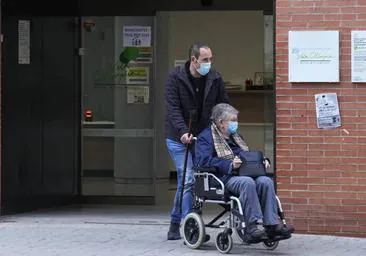How can I tell if I have the flu, a common cold or Covid-19?
Respiratory diseases increase at this time of year and have similar symptoms, though there are marked differences
Raquel Fidalgo
Gijón
Sunday, 7 January 2024
Patients with respiratory viruses continue to flood emergency department consultations and primary care appointments in Spain at the start of 2024. time of year. The flu is the cause of seven out of ten consultations attended by health professionals in Asturias in the north of the country. The region was the worst hit in Spain for hospital admissions due to respiratory infections during the last week of 2023. Both the flu and the common cold, as well as Covid-19 are respiratory diseases caused by different viruses which have similar symptoms.
As the symptoms of the flu, the common cold and Covid-19 are similar, it is normal to confuse the three ailments.
Both the flu and Covid-19 produce a sore throat, a cough and nasal congestion and in the case of the cold, all this is accompanied by the characteristic sneezes, congestion, and runny nose that Covid does not cause.
A test can determine if we have the flu or Covid-19, although it is also possible to identify the virus based on the symptoms.
Flu symptoms
In the case of influenza, the virus that causes it is the so-called influenza virus that can be fatal if it presents complications, especially for the most vulnerable among the population. It is usually associated with certain times of the year. The most common flu symptoms are a high fever, muscle aches, headache and throat pain, fatigue, dry cough, and nasal congestion. All of these symptoms appear suddenly.
The World Health Organization (WHO), notes that there are four types of influenza viruses: A, B, C and D. Type A and B influenza viruses are the most common and cause seasonal epidemics of the disease. The difference between influenza A and influenza B is that A is the most serious as it has the greatest mutation capacity and can be transmitted from animals to humans. Type B flu is milder and exclusively affects humans. The symptoms usually last longer and are especially harmful among young people and children; it has a higher prevalence among people in this age group.
Common cold symptoms
The cold shares symptoms with the flu, although it is usually accompanied by sneezing and the evolution of symptoms, usually gradually, which are much milder than those of the flu. Normally, a cold does not present complications other than the discomfort of suffering it. Its transmission, like the flu, is through the droplets that are expelled by coughing or sneezing and also by very direct contact with the affected person. Symptoms can appear one to three days after being exposed to the virus, and a recovery takes place in less than ten days.
As the symptoms of the flu, the cold and Covid-19 are similar, it is normal to confuse the three ailments. A test can determine if we have the flu or Covid-19, although it is possible to identify the virus based on the symptoms.
Covid-19 symptoms
Currently, among the symptoms produced by Covid-19 is a dry cough, muscle and throat pain, tiredness, fever, nasal congestion, an altered heart rate and loss of taste and/or smell. Sometimes there is diarrhoea and nausea. Even with the last identified omicron lineages, new symptoms such as loss of appetite or hoarseness have been detected.
In the event of any symptoms, the health authorities recommend going to the doctor to determine the cause and diagnosis and thus prevent the spread of these respiratory diseases.

